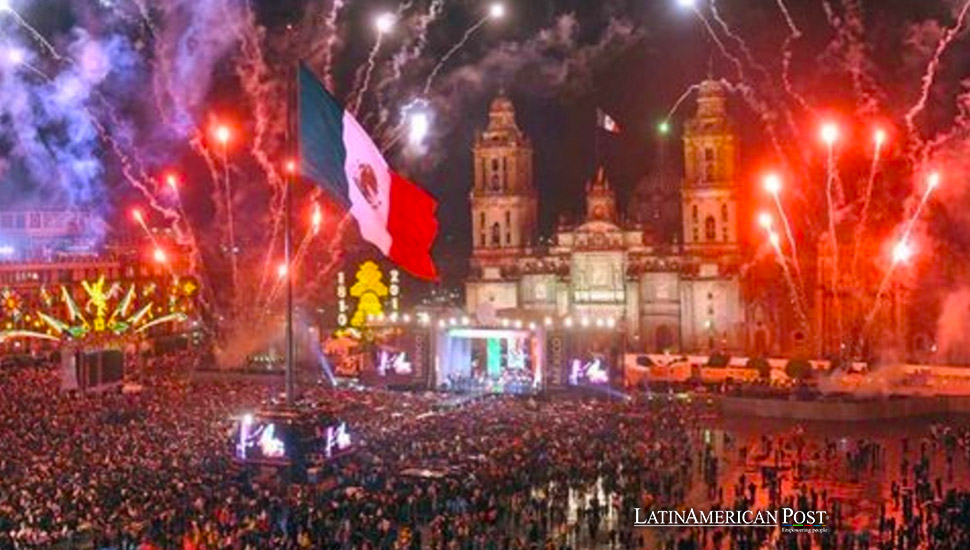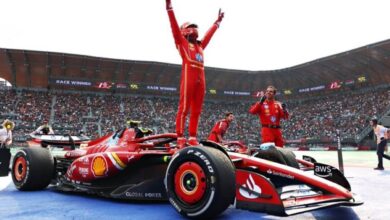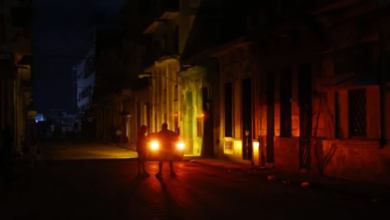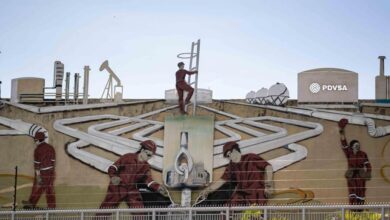Mexico’s Independence Celebrations: A Boost to the Tourism Economy

Mexico’s Independence Day, celebrated on September 15, is more than just a patriotic event — it’s a significant economic driver. With over 30 billion pesos expected in tourism revenue, the festivities bring cultural pride and a surge in visitors to the country’s most beloved destinations.
Mexico’s Independence Day celebrated with enthusiasm across the country on September 15, represents a moment of national pride and a significant economic boost. Every year, millions of Mexicans and international visitors flock to cities and tourist destinations to join in the celebrations, bringing massive revenue to the tourism sector.
The Mexican Secretariat of Tourism (Sectur) has forecasted that during the 2024 Independence Day festivities, the country will generate over 30 billion pesos (approximately USD 1.5 billion) in tourism revenue. This estimate includes spending on accommodations, dining, transportation, and other services as locals and tourists participate in the patriotic celebrations from September 13 to 16.
Miguel Torruco, Mexico’s Minister of Tourism, noted that the expected revenue from accommodations alone would total over 2.7 billion pesos (USD 138 million), as 1.19 million tourists are expected to stay in hotels, with nearly 80% of these visitors being Mexican. Beyond hotel stays, many will also be hosted in alternative accommodations such as vacation homes, with an additional 1.42 million tourists opting to stay with family and friends or using short-term rental platforms like Airbnb.
With vibrant parades, fireworks, and public events across the nation, Mexico’s Independence Day marks not only the country’s birth as a sovereign state but also one of the most economically impactful periods of the year for the nation’s tourism sector.
Economic Impact of the Independence Celebrations
Independence Day, from September 13 to 16, is one of the busiest times for Mexico’s tourism industry. This short holiday window sees an impressive surge in domestic and international tourism and spending on hospitality and other services.
This year, Sectur has predicted a national hotel occupancy rate of 59.5%, with the most popular tourist destinations, such as Riviera Maya, Cancún, Los Cabos, and Mexico City, enjoying even higher occupancy rates. Riviera Maya, for example, is expected to see 73.6% of its hotels filled, while Cancún is close behind with a 71.6% occupancy rate.
The broader economic impact of the Independence Day festivities stretches far beyond the hotels. As tourists visit popular vacation spots, local businesses benefit from increased dining, entertainment, souvenirs, and transportation spending. Additionally, many travelers explore Mexico’s Pueblos Mágicos (Magic Towns), small towns known for their cultural heritage and historical significance, spreading the financial benefits to more rural areas.
Torruco highlighted the importance of this period for both local and national economies, noting that the surge in tourism “generates an economic spillover into various tourist areas of Mexico, benefiting local populations.” Indeed, the influx of domestic and international visitors supports jobs, boosts local businesses, and brings much-needed revenue to communities reliant on tourism.
A Surge in Domestic and International Tourism
While international tourism is an essential part of Mexico’s tourism sector, domestic travelers make up the majority of visitors during the Independence Day period. According to Sectur’s forecast, nearly 2.3 million Mexicans will travel during the holiday, many of whom will stay with family or friends or in second homes. This underscores the significance of local tourism in driving the economic benefits during these patriotic celebrations.
International visitors are also vital to the holiday season, with 268,000 foreign tourists expected to arrive in Mexico for the Independence Day festivities. These visitors come for cultural experiences and to take advantage of the vibrant hospitality offerings that Mexican cities and coastal areas provide during the holiday.
Many travelers are turning to digital platforms for accommodations in addition to traditional hotel stays. This year, approximately 180,000 tourists—both domestic and international—are expected to book their stays through platforms like Airbnb, a trend that continues to reshape the hospitality industry in Mexico.
One of the key reasons for the increasing number of tourists, both local and foreign, is the array of cultural activities and festivities that take place across the country during Independence Day. From the famous Grito de Dolores (Cry of Dolores) reenactment, which marks the start of the revolution, to colorful parades, concerts, and fireworks, the celebrations draw people from all walks of life who want to take part in this powerful expression of national pride.
Mexico’s Iconic Destinations Shine During the Festivities
As Mexico prepares for its annual patriotic celebration, several iconic destinations are gearing up for an influx of visitors. The Riviera Maya, with its pristine beaches and rich cultural heritage, is expected to be a top destination, with a projected hotel occupancy rate of 73.6%. Cancún follows closely with 71.6% occupancy, while the bustling city of Los Cabos is also set to welcome thousands of tourists, with 70.1% of its hotels expected to be filled.
Mexico City, the heart of the Independence Day celebrations, is another focal point for travelers. With its grand historical buildings and central Zócalo square, where the president of Mexico delivers the annual Grito de Dolores, the capital city will see hotel occupancy rates of nearly 70%. The city’s rich history and cultural significance make it an unparalleled destination for those looking to experience the essence of Mexican independence.
Other popular locations include Puerto Vallarta, Mazatlán, Monterrey, and Mérida, all of which are expected to have hotel occupancy rates between 60 and 70%. These cities, known for their unique charm, are also prime spots for tourists looking to combine the festivities with a relaxing vacation by the beach or exploring cultural landmarks.
The variety of destinations underscores Mexico’s diversity as a tourist hub, offering something for every type of traveler. Whether visiting for the parades in Mexico City, the beach resorts of the Yucatán Peninsula, or the rich cultural history of colonial cities, there is no shortage of places to celebrate Mexico’s independence.
The Role of ‘Pueblos Mágicos’ and Local Culture
One of the unique aspects of Mexico’s tourism industry is its emphasis on Pueblos Mágicos (Magic Towns), small towns that offer a glimpse into the country’s rich cultural heritage. These towns, many of which are located in less traveled regions, play a significant role during the Independence Day celebrations, drawing visitors who want to experience traditional Mexican culture away from the larger cities.
Among the most notable Pueblos Mágicos featured by the Mexican Secretariat of Tourism this year are Isla Mujeres and Cozumel in the state of Quintana Roo, Tecate in Baja California, and Taxco in Guerrero. These towns offer travelers a slower-paced, more intimate experience of the celebrations, combining the beauty of natural landscapes with the cultural richness of local traditions.
By promoting these towns during the Independence Day period, the Mexican government is not only spreading the economic benefits of tourism more widely but also ensuring that the country’s heritage is preserved and celebrated. Visitors to Pueblos Mágicos can expect to find charming colonial architecture, local artisans selling handmade crafts, and traditional festivals that bring Mexico’s history to life.
In addition to the economic benefits, these towns also play a crucial role in preserving Mexican identity. During Independence Day, many of the traditions and customs passed down through generations are showcased in these regions, allowing travelers to connect more deeply with Mexico’s history and culture.
Mexico’s Independence A Cultural and Economic Powerhouse
As Mexico’s Independence Day approaches, the country is set to benefit not only from a boost in national pride but also from a significant economic windfall. With over 30 billion pesos expected to be generated in tourism revenue, the holiday represents a key period for the nation’s hospitality and travel industries.
Also read: Mexico City Caps Rent Hikes Amid Rising Housing Costs
From the iconic streets of Mexico City to the tranquil beauty of Pueblos Mágicos, tourists from near and far will take part in the festivities, fueling local economies and supporting small businesses. As the celebrations unfold, Mexico’s vibrant culture will shine on the global stage, reminding the world of the country’s rich history and enduring spirit of independence.




